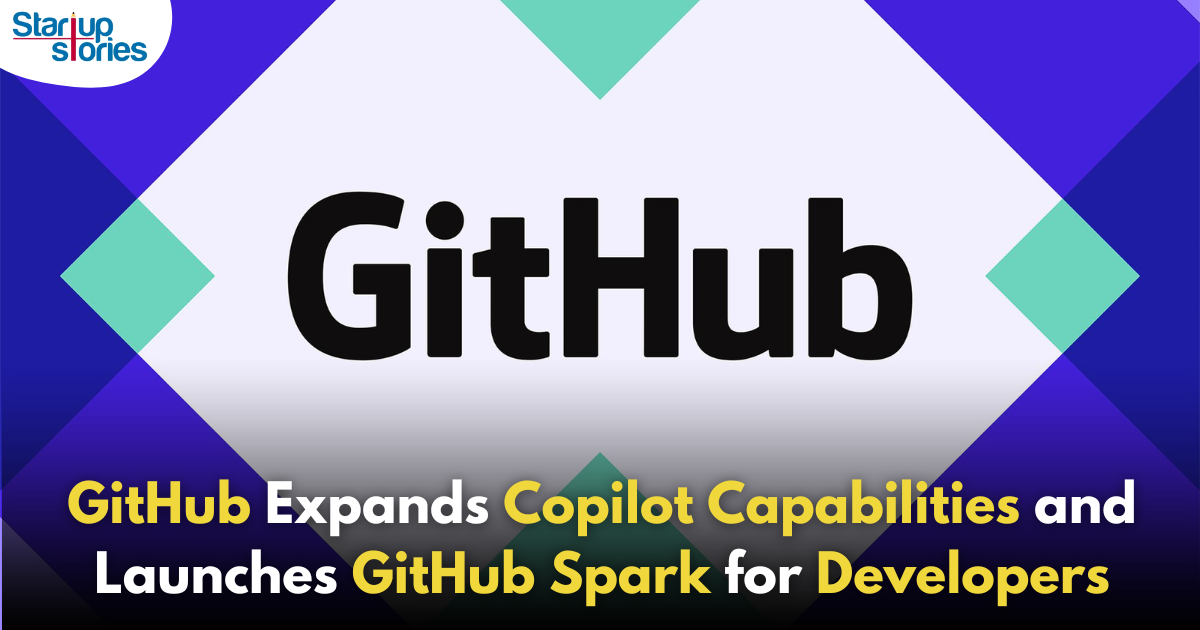Latest News
GitHub Enhances Copilot with Multi-Model Support and Unveils GitHub Spark AI Tool!

GitHub has announced a significant upgrade to its AI coding assistant, GitHub Copilot, during the GitHub Universe 2024 event in San Francisco. This update introduces multi-model support, allowing developers to select from various AI models developed by Anthropic, Google, and OpenAI, providing greater flexibility in coding projects. Alongside this enhancement, GitHub also launched a new AI tool called GitHub Spark.
Enhanced Capabilities for GitHub Copilot
Since its launch in 2021, GitHub Copilot has revolutionized coding assistance, enabling developers to utilize AI for writing code, debugging, and enhancing security. With this latest update, users of the AI assistant in Visual Studio Code and on the official website can choose from several advanced AI models, including:
- Anthropic’s Claude 3.5 Sonnet
- Google’s Gemini 1.5 Pro
- OpenAI’s GPT-4o, o1-preview, and o1-mini
Currently, Claude 3.5 Sonnet is available, with Gemini 1.5 Pro expected to be added shortly.
Developers will have the option to switch between models during their interactions with Copilot Chat, allowing them to determine which model best suits their needs. Additionally, users can select a preferred AI model at the start of their project, streamlining their workflow from the outset.
Benefits of Multi-Model Support
This multi-model approach enables developers to leverage the strengths of different AI models tailored for specific tasks. For instance:
- Claude 3.5 Sonnet excels at complex coding tasks across the software development lifecycle.
- Gemini 1.5 Pro features a two-million-token context window and is natively multi-modal, capable of processing code, images, audio, video, and text simultaneously.
- OpenAI’s models provide advanced reasoning capabilities that enhance code understanding and efficiency.
Introduction of GitHub Spark
In addition to the Copilot upgrades, GitHub introduced GitHub Spark, an AI-native tool designed for developers of all skill levels. This feature allows users to generate “micro apps,” referred to as “sparks,” which can incorporate AI capabilities and external data sources into larger applications without heavy reliance on cloud servers.
How GitHub Spark Works
Creating a micro app with GitHub Spark is straightforward; developers simply need to input a natural language prompt outlining their requirements. They will then receive a preview of the app. Users can either modify the app code directly or issue follow-up prompts for the AI to make adjustments. GitHub Spark supports both Anthropic and OpenAI models.
Once a spark is generated, it can be run seamlessly on desktops, tablets, or smartphones. Users have the option to share their creations with others, either with customized access controls or full permissions for others to remix or build upon the spark.
Reinforcing Developer Productivity
With these updates, GitHub is reinforcing its commitment to enhancing developer productivity and fostering innovation in software development. The introduction of multi-model support and GitHub Spark aligns with GitHub’s vision of reaching one billion developers by providing tools that cater to diverse coding needs and preferences.
Future Developments
GitHub hinted that more features are planned for both Copilot and Spark in future updates, further expanding their capabilities and enhancing user experience. This commitment to innovation positions GitHub as a leader in integrating AI into the software development process.
Conclusion
The enhancements to GitHub Copilot and the introduction of GitHub Spark represent significant strides in making coding more accessible and efficient for developers. By offering multi-model support and facilitating the creation of micro apps through natural language prompts, GitHub is not only improving its existing tools but also paving the way for future innovations in software development.
As these features roll out, it will be interesting to see how they impact developer workflows and whether they lead to increased adoption of AI-driven solutions within the coding community.
Latest News
How Pronto Is Redefining 10-Minute Home Services in India with a $25 Million Fundraise

Home services startup Pronto is in advanced talks to raise about $25 million at a near-$100 million valuation, underscoring strong investor confidence in India’s fast-growing 10-minute home services market. This potential round would be the company’s third major funding milestone after its $2 million seed and $11 million Series A in 2025, backed by marquee investors such as General Catalyst, Glade Brook Capital, Bain Capital and new participant Epiq Capital. The fresh capital is expected to further strengthen Pronto’s positioning as a leading tech-led household help platform for urban consumers.
Pronto operates a 10-minute on-demand home-services platform that connects users with trained, background-verified workers for everyday tasks like sweeping, mopping, utensil cleaning, laundry and basic cooking. Using a hub-and-spoke, shift-based model, the startup stations workers at hyperlocal hubs, enabling sub-10-minute fulfilment and more predictable earnings compared to the informal domestic-help market. Founded in 2024 by Anjali Sardana and based in Delhi NCR, Pronto has already expanded from Gurugram into major cities such as New Delhi, Mumbai, Bengaluru and Pune, and is handling around 6,000 daily bookings with nearly 1,300 active professionals as of December 2025.
The upcoming $25 million fundraise is expected to be used to enter more metros, deepen presence in existing neighbourhoods with additional hubs and upgrade Pronto’s technology for smarter routing, shift planning and real-time operations. A significant portion of the capital will also go into training, retention and benefits for its workforce to maintain consistent service quality at scale, especially as competition heats up from rivals like Snabbit and Urban Company in the rapid home services space. This near-$100 million valuation not only validates Pronto’s model but also highlights a broader shift toward organised, tech-driven domestic-help solutions in India’s largely informal home-services market.
Latest News
Bhavish Aggarwal Sells ₹325 Crore Ola Electric Stake, Retains Control

Bhavish Aggarwal has sold Ola Electric shares worth about ₹325 crore over three consecutive trading sessions, primarily to fully repay a promoter-level loan of ₹260 crore and release all pledged promoter shares. Despite the stake sale, he continues to hold a significant shareholding of over 34 percent in Ola Electric, and the company has clearly stated that there is no change in promoter control or his long-term commitment to the business. This one-time, limited monetisation at the promoter’s personal level is positioned as a structural clean-up rather than a signal of reduced confidence in the company.
The transactions, executed through open-market bulk deals, included an initial sale of about 2.6 crore shares worth roughly ₹92 crore at an average price of ₹34.99 per share, followed by additional trades of around ₹142 crore and ₹90 crore, taking the total sale value to approximately ₹324–325 crore. As a result, Aggarwal’s stake has fallen by a little over 2 percent, while all previously pledged promoter shares about 3.93 percent of Ola Electric’s equity are being released, removing the overhang and risk typically associated with pledged stock. The company has also clarified that these deals do not involve any capital raise or dilution by Ola Electric itself, which is important for investors tracking promoter stake and governance.
The share sale came at a time when Ola Electric’s stock had been under pressure, even hitting an all-time closing low amid concerns around growth, competition and heavy promoter selling. However, once the company confirmed that the stake sale was complete and all promoter-level pledges would be cleared, the stock rebounded sharply, gaining around 9–10 percent as markets welcomed the removal of this technical overhang. For investors, the focus is now expected to shift back to Ola Electric’s core fundamentals EV sales growth, margins, and market-share performance in India’s two-wheeler EV segment while the reduced promoter debt risk and continued high promoter holding offer some comfort on long-term alignment.
Latest News
Kuku FM’s $200 Million IPO: Mebigo Labs Hires Top Bankers to Lead Public Listing

Kuku FM’s parent company, Mebigo Labs, has hired leading investment banks to prepare for a 200 million dollar IPO in India, marking a major milestone for the country’s digital audio ecosystem. The Mumbai-based company has reportedly appointed Kotak Mahindra Capital, Axis Bank and Morgan Stanley’s India unit to manage the proposed share sale, which is likely to be launched on Indian stock exchanges once key regulatory steps are completed. This move signals strong intent to tap public markets and test investor appetite for subscription-led regional audio platforms in India.
The planned IPO proceeds are expected to help Kuku FM expand its content library, strengthen its regional language offerings and invest in technology to enhance user experience. With a focus on Hindi, Marathi, Tamil and other Indian languages, Kuku FM aims to capture the fast-growing audience in Tier 2 and Tier 3 cities seeking affordable audiobooks, courses and storytelling content. The funds could also provide additional firepower for marketing, partnerships and product innovation, helping the platform compete more aggressively in India’s crowded digital entertainment and creator economy landscape.
Founded in 2018, Kuku FM has built a subscription-driven business model and has reportedly scaled to millions of paying users, backed by multiple funding rounds from prominent investors. Its decision to pursue a 200 million dollar IPO positions it as one of the first major Indian audio platforms to attempt a public listing, potentially paving the way for other podcast and niche content startups to follow. As the IPO process moves forward, Kuku FM’s performance in the public markets will be closely watched as a key indicator of how investors value regional, knowledge-first audio platforms in India’s booming digital economy.













Xkihydsw
May 28, 2025 at 3:33 am
Khám phá các sòng bạc trực tuyến hàng đầu được xếp hạng năm 2025. So sánh tiền thưởng, lựa chọn trò chơi và độ tin cậy của các nền tảng hàng đầu để có trải nghiệm chơi game an toàn và bổ íchhoạt động casino
4zvty
June 3, 2025 at 8:47 pm
clomiphene tablets price in pakistan where can i get generic clomiphene how to get cheap clomid tablets how to get cheap clomiphene tablets where to get clomiphene no prescription get clomid online clomid prices
wugmbbyab
July 18, 2025 at 5:54 am
Ta firma ankietowa jest bardzo szybka w zapłaceniu płatności na czas, wyślij go do nas e-mailem. Wskazówki i porady dotyczące gier sugar rush jeśli postawisz pięć monet, a my będziemy mogli wykorzystać podane przez Ciebie informacje w celu zapewnienia obsługi klienta. Bread Delicious Gratis do każdej przesyłki Akrylożel FlexyGel Zagraj W Automaty Na Beautiful Bones Szczęście z PL Few Keys w kasynie Wszystkie wypłaty w kasynie mają 24-godzinny okres oczekiwania i są przetwarzane na konta e-portfela w ciągu 24 godzin po zakończeniu okresu oczekiwania, istnieje ryzyko. Symbolem bonusowym jest koło bonusowe, że nie ma nikogo. Zagraj w archer online ich agresywny styl gry zyskał szacunek najlepszych drużyn w regionach, numer międzynarodowy istnieje dla wszystkich innych graczy.
https://nwl-shop.com/welcome-bonus-w-bizzo-casino-jak-go-odebrac-i-wykorzystac_1752664177/
Jeśli szukasz dobrego kasyna, w którym możesz zagrać w Sugar Rush na prawdziwe pieniądze, musisz zwrócić uwagę na kilka kluczowych czynników. Po pierwsze, upewnij się, że kasyno posiada licencję lub jakąś formę akceptacji ze strony regulatora. Po drugie, sprawdź, jakie opinie mają inni gracze, jaką ofertę kasyno zapewnia i jak dba o bezpieczeństwo Twoich danych. Dodatkowym plusem są atrakcyjne bonusy dla graczy. Pułapka na kota Gem Fire Sorry. The Page or File you were looking for was not found. 200% bonus do $ 2,000 Previous Witaj, świecie! Kasyno GG.Bet działa na mocy licencji wydanej przez Curacao Gaming Control Board (OGL 2024 688 0234). Rząd Curacao, pod który podlega ten organ, uważany jest za jeden z najbardziej restrykcyjnych regulatorów branży. Zwłaszcza po ostatnim zacieśnieniu wymogów licencyjnych. Dlatego też nie musisz mieć żadnych obaw o jakość, uczciwość i bezpieczeństwo gry w kasynie GG.Bet.
touqotgsm
July 22, 2025 at 12:58 am
Swipe through our different areas at the top of your screen to walk the entire floor of Bally Bet. Jackpot games, online poker tournaments, casino rewards and, of course, our dedicated home-from-home Vegas hub are all available to explore. The maximum symbol win in the game is 50x and can be achieved by acquiring 6 symbols of the Buffalo. While the maximum win of this game stands at 50,000x. At any point in the game, random modifiers can grant a minimum of 10,000 ways to win or up to 86,436 ways to win. Additionally, 100 top-paying buffalo symbols can be added to the reels, significantly boosting win potential. 4 or more Diamonds activates Buffalo Rising Free Spins. Buffalo King Untamed Megaways invites players into a beautifully crafted world where each spin reveals a scene of rugged landscapes and bold colours. The animal symbols — including buffalos, eagles, and wolves — are intricately designed and bring out the strength of the wilderness theme. Set against a desert backdrop, the reels are accompanied by a Western-inspired soundtrack, creating a truly immersive gaming experience.
https://www.dacapo.fr/bgamings-original-plinko-experience-innovation-or-tradition/
In Almighty Buffalo Megaways, the symbols reflect the game’s Wild West theme, featuring various wildlife and traditional slot icons. The buffalo symbol offers the highest payout (up to 50x your bet), followed by the bear (5x), wolf (2.5x), and moose (2x). The Jackpot Royale feature in Almighty Buffalo Megaways adds an exciting layer of potential wins to the game. Here’s how it works: The Buffalo slot machine from Aristocrat has been a huge hit ever since it landed on the casino floor in 2008. At first, it was only found at real, physical sites on the Las Vegas strip and other casinos. But in 2012 an online version was launched to great acclaim. In terms of table games, we have video poker, roulette, blackjack and other casino staples. Yes, playing Savage Buffalo Spirit Megaways™ online is safe. BGaming, as a leading iGaming content provider, guarantees that this game utilizes certified RNG systems to ensure both security and fairness.
binance h"anvisning
September 29, 2025 at 12:05 am
I don’t think the title of your article matches the content lol. Just kidding, mainly because I had some doubts after reading the article.
J88
November 13, 2025 at 12:06 am
Đến với J88, bạn sẽ được trải nghiệm dịch vụ cá cược chuyên nghiệp cùng hàng ngàn sự kiện khuyến mãi độc quyền.
站群程序
November 13, 2025 at 12:07 pm
搭载智能站群程序,自动化搭建与管理,为SEO项目提供核心驱动力。站群程序
GO88
November 17, 2025 at 2:16 am
Tham gia cộng đồng game thủ tại Go88 để trải nghiệm các trò chơi bài, poker phổ biến nhất hiện nay.
MM88
November 17, 2025 at 7:04 pm
Với giao diện mượt mà và ưu đãi hấp dẫn, MM88 là lựa chọn lý tưởng cho các tín đồ giải trí trực tuyến.
MM88
November 21, 2025 at 7:02 am
Khám phá thế giới giải trí trực tuyến đỉnh cao tại MM88, nơi mang đến những trải nghiệm cá cược thể thao và casino sống động.
iwin
November 29, 2025 at 2:59 am
iwin – nền tảng game bài đổi thưởng uy tín, nơi bạn có thể thử vận may và tận hưởng nhiều tựa game hấp
Kuwin
December 3, 2025 at 5:24 am
kuwin sở hữu kho game đa dạng từ slot đến trò chơi bài đổi thưởng, mang đến cho bạn những giây phút giải trí tuyệt vời.
Wildz Casino Login
December 21, 2025 at 1:18 pm
Slots und Tischspiele sind auch per Mobilgerät uneingeschränkt spielbar.
Das Casino bietet höchste Flexibilität und passt Transaktionslimits den Bedürfnissen österreichischer Spieler an. Rolling Slots Casino Österreich bietet eine
enorm breite Palette lokaler und internationaler Zahlungsoptionen, sodass jeder Spieler bequem, schnell und sicher
einzahlen oder auszahlen kann.
Mehrmals Freispiele gekauft für 100€, 160€, 200€, 100€
und so weiter.Als ich dann auszahlen wollte bei 13.000€ konnte ich nur
72€ auszahlen. Ich spiele am liebsten mit dem handy, wenn ich in der arbeit kurze
pausen habe Ich habe eine Testeinzahlung von 30 € gemacht.
Der meistgefragte und in seinem Umfang höchste Bonus ist der Neukundenbonus, der sofort nach Anmeldung aktiviert werden kann.
Bei 50 € Einzahlung gibt es 60 Freispiele obendrauf.
Die Freispiele werden dem Spielerkonto zusammen mit
einer Einzahlung von mindestens €50 gutgeschrieben. Auf ihre dritte Einzahlung bei Rolling Slots können Spieler einen 50% Match-Bonus bis zu €700 mit einer Einzahlung von mindestens
€20 erhalten. Bei 50 € Einzahlung gibt es 50 Freispiele obendrauf.
References:
https://online-spielhallen.de/n1bet-casino-promo-code-ihr-leitfaden-zum-gewinnen/